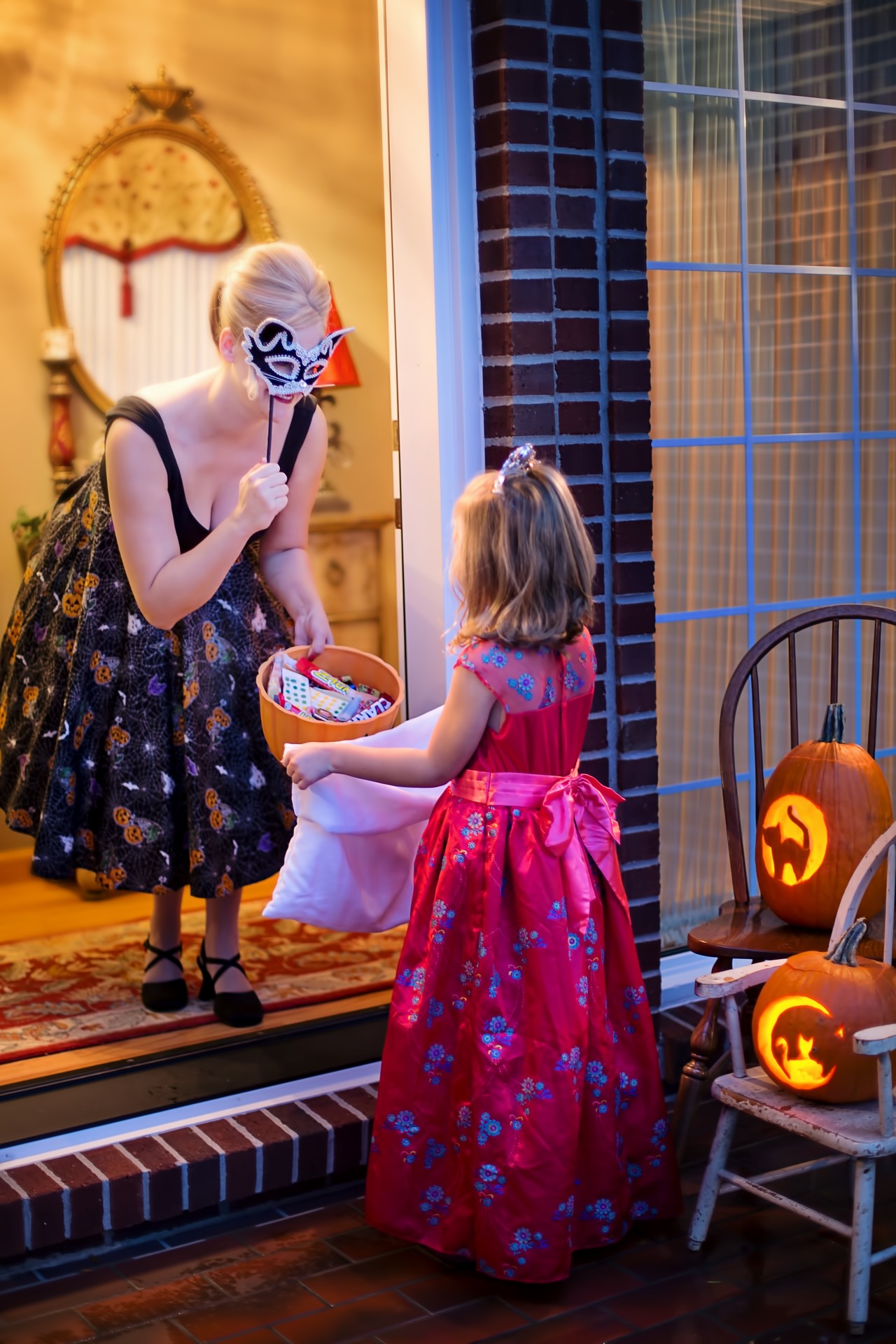The Moldovan language, in its official form, is practically identical to Romanian, although there are some differences in colloquial speech. During the Middle Ages, Romanian was isolated from the other Romance languages, and borrowed words from the nearby Slavic languages (see Slavic influence on Romanian). Mircea Eliade, writer and historian of religions, Sergiu Celibidache, honored conductor and music teacher. The ethnic origins of Romanians - Stormfront It has been said that they constitute "an island of Latinity"[5] in Eastern Europe, surrounded on all sides either by Slavic peoples (namely Southern Slavic peoples and Eastern Slavic peoples) or by the Hungarians. At the time of the 1989 census, Moldova's total population was 4,335,400. of the Balkan Peninsula dates back to 980. Romanians are usually traditional and very attached to their families, so even you are dating an independent Romanian, don't underestimate the importance of the family in their life. The total fertility rate is the number of children born per woman. Sharing a common Romanian culture and ancestry, and speaking the Romanian language, they live primarily in Romania and Moldova. [60] In one interpretation of the 1989 census results in Moldova, the majority of Moldovans were counted as ethnic Romanians in this country as well. Stanescu, Eugen. [161] Numbering about 500 people still living in the original villages of Istria while the majority left for other countries after World War II (mainly to Italy, United States, Canada, Spain, Germany, France, Sweden, Switzerland, Romania, and Australia), they speak the Istro-Romanian language, the closest living relative of Romanian. Moscow: Nauka, 2010, pp. Just a slight majority, 56.4 percent, lives in urban areas (12,546,212 people in total). Un rcit dessin de 192 pages en noir et blanc, publi aux ditions Vents d'Ouest . The generations born in 1967 and 1968 were the largest, although fertility remained relatively high until 1990. Convention of the Hungarian Baptist Churches of Romania, Population exchange between Bulgaria and Romania, https://www.unfpa.org/data/world-population/RO, "Infant mortality rate - the World Factbook", "COMUNICAT DE PRES: 2 februarie 2012 privind rezultatele provizorii ale Recensmntului Populaiei i Locuinelor", "Refugees fleeing Ukraine (since 24 February 2022)", "Populaia Romniei, creterea alarmant: Suntem la nivelul Germaniei. Romanians are talkative and assertive Romanians like to talk. N.N. [101][96][102], The princess and chronicler Anna Komnene reports that in April 1091, on the eve of the decisive Byzantine-Pecheneg Battle of Levounion, Emperor Alexios I Komnenos (1057-1118) was assisted by "a number of 5,000 brave mountaineers and ready to attack, passed by his side, to fight alongside him". This character was created by the Irish fiction writer Bram Stoker, based on some stories spread in the late Middle Ages by the frustrated German tradesmen of Kronstadt (Braov) and on some vampire folk tales about the historic Romanian figure of Prince Vlad epe. [175] The eastern branches of R1b represent 7%, they prevail in parts of Eastern and Central Europe as a result of Ancient Greek colonisation in parts of Sicily as well. [82] Most researchers identify the Blachij with the Vlachs. However, Moldavia and Wallachia (extending to Dobruja and Bulgaria) were not entirely subdued by the Ottomans as both principalities became autonomous (which was not the case of other Ottoman territorial possessions in Europe). Romnia are 19.053.815 locuitori. [152] However, some non-specialist organisations have produced estimates which are considerably higher: a 2002 study by the Romanian-American Network Inc. mentions an estimated figure of 1,200,000[43] for the number of Romanian Americans. For example, according to a 2006 Eurobarometer poll, only 23% of Romanians attend church once a week or more. Dodge, New York, Columbia University Press, 1970, p. 37 with n.82. Since the Romanian Revolution of 1989, Bucharest and other cities have again become increasingly cosmopolitan, including identifiable presences from outside the EU (Chinese, Turks, Moldovans, Syrians, Iraqis, Africans) as well as from the EU (French, Italians, Germans, British, Greeks). [136] One example is Tranquillo Andronico's 1534 writing that states that the Vlachs "now call themselves Romans". The third theory also known as the admigration theory, proposed by Dimitrie Onciul (18561923), posits that the formation of the Romanian people occurred in the former "Dacia Traiana" province, and in the central regions of the Balkan Peninsula. Romani people - Wikipedia Nicolae Ceauescu became the head of the Romanian Communist Party (PCR) in 1965 and his severe rule of the 1980s was ended by the Romanian Revolution of 1989. Kamusella continues by stating that they preferred this ethnonym in order to stress their presumed link with Ancient Rome and that it became more popular as a nationalistic form of referring to all Romanian-language speakers as a distinct and separate nation during the 1820s. During World War II, the Kingdom of Romania lost territory both to the east and west, as Northern Transylvania became part of the Kingdom of Hungary through the Second Vienna Award, while Bessarabia and northern Bukovina were taken by the Soviets and included in the Moldavian SSR, respectively Ukrainian SSR. Country comparison to the world: 106th, This page was last edited on 18 April 2023, at 05:54. Although the relatively newly founded Kingdom of Romania initially allied with Austria-Hungary, Romania refused to enter World War I on the side of the Central Powers, because it was obliged to wage war only if Austria-Hungary was attacked. The principal minorities are Hungarians and Roma, although other smaller ethnic groups exist too. [170] The frequency of I2a1 (I-P37) in the Balkans today is owed to indigenous European hunter-gatherers tribes, and was present before the Slavic migrations to the Balkans. [172] Haplogroup R1a, is a human Y-chromosome DNA haplogroup which is distributed in a large region in Eurasia, extending from Scandinavia and Central Europe to southern Siberia and South Asia. III, Bucharest, 1975, VI, pp 3. Romanian Genetics - DNA of the majority ethnic group in - Khazaria Romania is a country in southeastern Europe bordering Ukraine, Bulgaria, Moldova, Hungary and Serbia. According to the 2011 Romanian census, 2.5% of ethnic Romanians in Romania identified themselves as Catholic (in comparison to 5% of Romania's total population, including other ethnic groups). Romania is not Western. The Vlachs killed David in their first documented battle. Topul rilor UE n care romnii reprezint cea mai mare comunitate", "Bosnia i Heregovina Comunitatea romneasc", "Total ancestry categories tallied for people with one or more ancestry categories reported, 2014 American Community Survey 1-Year Estimates", "U.S. Census Bureau, 2009 American Community Survey", Romanian Communities Allocation in United States: Study of Romanian-American population (2002), "2011 National Household Survey: Data tables", "200.000 de romni triesc "visul brazilian", "AMERICA LATIN DRP Departamentul pentru Romanii de Pretutindeni", "The Week of the Romanian Diaspora in Argentina The immigration of the Romanians to Argentina", "Ci romni au prsit Romnia pentru a tri n strintate", "Romania - International emigrant stock 2019", "Ethnic composition, religion and language skills in the Republic of Kazakhstan", "Socio-economic development of the Republic of Kazakhstan", "Recensmnt 2022. Supplementary Tables", "Microsoft Word - REZULTATE DEFINITIVE RPL2011.doc", "Total Fertility Rate around the world over the last centuries", "Eurostat - Tables, Graphs and Maps Interface (TGM) table", "Bun venit la Institutul National de Statistica - Institutul National de Statistica", "Welcome to National Institute of Statistics | National Institute of Statistics", "World Population Prospects - Population Division - United Nations", "The World Factbook Central Intelligence Agency", "POPULAIA ROMNIEI PE LOCALITI LA 1 IANUARIE 2016", "GHO - By category - Life expectancy and Healthy life expecancy - Data by country", "Countries Compared by People > Total population > Age 25-29 >% of the total. Roman people - Wikipedia According to the 2011 Romanian census they number 51,703 people, making up 0.3% of the total population. Wallachia, the Southern region of Romania, takes its name from the same source. The eastern territory losses were facilitated by the Molotov-Ribbentrop Nazi-Soviet non-aggression pact. The territories of modern-day Romania and Moldova were inhabited by the ancient Getae and Dacian tribes. In 2014, the PNL-PDL candidate (as part of the larger Christian Liberal Alliance or ACL for short; also endorsed by the Democratic Forum of Germans in Romania, FDGR/DFDR for short respectively) Klaus Iohannis won a surprise victory over former Prime Minister and PSD-supported contender Victor Ponta in the second round of the 2014 presidential elections. Even before the union with Romania, ethnic Romanians comprised the overall majority in Transylvania. Based on linguistic and archaeological findings, historians suggest that the Romanians' ancestors acquired polytheistic religions in the Roman era, later adopting Christianity, most likely by the 4th century AD when decreed by Emperor Constantine the Great as the official religion of the Roman Empire. Curta, Florin (2006), pp. If we need to, we refer to either 'aggregated' ethnic groups or ethnic groups 'as a whole'. ISBN 978-0-19-866277-8. sfn error: no target: CITEREFKazhdan1991 (, sfn error: no target: CITEREFWiewiorowski2008 (, sfn error: no target: CITEREFZahariade2006 (, Stelian Brezeanu, O istorie a Bizanului, Editura Meronia, Bucureti, 2005, p.126, Aksum: an African civilisation of late antiquity By Stuart C. Munro-Hay Page 145, Alexandru Madgearu | Originea medieval a focarelor de conflict din Peninsula Balcanic, pp=52-53. [124][125]White Wallachia, a Byzantine denomination for the region between the Danube River and the Balkans; Moravian Wallachia, a region in south-eastern Czech Republic). Romani people constitute one of Romania's largest minorities. [154] The vast majority are Eastern Orthodox Christians, belonging to the Romanian Orthodox Church (a branch of Eastern Orthodoxy, or Eastern Orthodox Church, together with the Greek Orthodox, Orthodox Church of Georgia and Russian Orthodox Churches, among others). [96][97] He associated the Vlachs with the Dacians and the Bessi. In the history of aviation, Traian Vuia and Aurel Vlaicu built and tested some of the earliest aircraft designs, while Henri Coand discovered the Coand effect of fluidics. [155][156], According to the 2011 census, 93.6% of ethnic Romanians in Romania identified themselves as Romanian Orthodox (in comparison to 81% of Romania's total population, including other ethnic groups). They traded and transported salt throughout the Bulgar Empire. Most Romanians live in Romania, where they constitute a majority; Romanians also constitute a minority in the countries that neighbour Romania. Performance Arts Traditional Romanian dancers. 137-177. The Hungarian minority in Romania constitutes the country's largest minority, or as much as 6.0 per cent of the entire population. Rootsi, Siiri (2004). In 1916, Romania joined the war on the side of the Triple Entente. There are no official dates for the adoption of religions by the Romanians. The name Romanian is derived from Latin romanus, meaning "Roman". [72] According to the Laterculus Veronensis of c.314 and the Notitia Dignitatum of c.400, Scythia belonged to the Diocese of Thrace. Human Y-chromosomal variation in European populations (PhD Thesis). [91][92], A series of Byzantine historians, such as George Kedrenos (circa 1000), Kekaumenos (circa 1000), John Skylitzes (early 1040s after 1101), Anna Komnene (1083-1153), John Kinnamos (1143-1185) and Niketas Choniates (1155-1217) were some of the first to write about the Vlachs. After Hungarians and Romani, Ukrainians of Romania are the third-largest minority. The largest nationality in the republic, ethnic Romanians, numbered 2,795,000 persons, accounting for 64.5 percent of the population. Haplogroup I occurs at 32% in Romanians. [177], Painting of Transylvanian Romanian peasants from Abrud by Ion Theodorescu-Sion, Romanian family going to a fair, early 19th century, Traditional Romanian peasant costumes to the left, followed from left to right by Hungarian, Slavic, and German ones, Romanians from Transylvania, late 19th century, Romanian peasant costume from Bukovina, early 20th century, Romanians from Bukovina, early 20th century postcard, Romanians from Wallachia, early 19th century, Romanians from central Serbia, late 19th century, Romanian infantrymen from Wallachia, early 19th century, Romanian immigrants in New York City, late 19th century, Painting of a young Wallachian shepherd in the early 20th century by Ipolit Strmbu, Romanian peasants during the harvest season (1920), Mid-19th century French map depicting Romanians in Central and Eastern Europe, Modern distribution of the Eastern Romance-speaking ethnic groups (including, most notably, the Romanians), Romanians in Central Europe (coloured in blue), 1880, Ethnic map of Austria-Hungary and Romania, 1892, British map depicting territories inhabited by Eastern Romance peoples before the outbreak of World War I, Romanian speakers in Central and Eastern Europe, early 20th century, Map of the Kingdom of Romania at its greatest extent (19201940), Geographic distribution of ethnic Romanians in the early 21st century, Notable regions with inhabited by Eastern Romance speakers at the beginning of the 21st century, Map highlighting the three main sub-groups of Daco-Romanians, Geographic distribution of Romanians in Romania (coloured in purple) at commune level (2011 census), Geographic distribution of Romanian in Romania (coloured in purple) at county level (2011 census), For information on the population of Romania, see, Ethnic distribution of Romanians around the world, Includes additional 177,635 Moldovans in Transnistria; as per the 2004 census in Transnistria. 1 Green myth. Also, this number does not include ethnic-Romanians who no longer speak the Romanian language. [146] Wolfgang Dahmen claims that the meaning of romanus (Roman) as "Christian", as opposed to "pagan", which used to mean "non-Roman", may have contributed to the preservation of this word as an ethonym of the Romanian people, under the meaning of "Christian". Romanians have played and contributed a major role in the advancement of the arts, culture, sciences, technology and engineering. Romania, country of southeastern Europe. Most Roma speak some form of Romany, a language closely related to the modern Indo-European languages of northern India, as well as the major language of the country in which they . The chaos of the 1989 revolution brought to power the dissident communist Ion Iliescu as president (largely supported by the FSN). [134] Examples of this would include Petr Shornikov,[144] Mikhail Guboglo and Valentin Dergachev. Transylvania, a third region inhabited by an important majority of Romanian speakers, was a vassal state of the Ottomans until 1687, when the principality became part of the Habsburg possessions. [111], The Second Bulgarian Empire founded by the Asen dynasty consisting of Bulgarians and Vlachs was founded in 1185 and lasted until 1396. In fertility rates, 2.1 and above is a stable population and has been marked blue, 2 and below leads to an aging population and the result is that the population decreases. [115] Bla IV of Hungary's land grant to the Knights Hospitallers in Oltenia and Muntenia shows that the local Vlach rulers were subject to the king's authority in 1247. It is believed that they diverged from the Romanians in the 7th to 9th century, and currently speak the Aromanian language and Megleno-Romanian language, both of which are Balkan Romance languages, like Romanian, and are sometimes considered by traditional Romanian linguists to be dialects of Romanian. ISBN 978-0-88033-440-2. sfn error: no target: CITEREFMadgearu2001 (. Romania was occupied by Soviet troops in 1944 and became a satellite of the Union of Soviet Socialist Republics (U.S.S.R.) in 1948. In English, Romanians are usually called Romanians and very rarely Rumanians or Roumanians, except in some historical texts, where they are called Roumans or Vlachs. 9 (1971) p. 585-593. On the other hand, the Aromanians and the Megleno-Romanians are Romance peoples who live south of the Danube, mainly in Greece, Albania, North Macedonia and Bulgaria although some of them migrated to Romania in the 20th century. Romanian business culture Did you know about business culture in Romania? In addition to the colours of the Romanian flag, each historical province of Romania has its own characteristic symbol: The coat of arms of Romania combines these together. The Romani (also spelled Romany or Rromani / romni /, / r -/ ), colloquially known as the Roma, are an Indo-Aryan ethnic group and traditionally nomadic itinerants. Originally within the Byzantine Empire, but after the 13th century autonomous or semi-independent. [135] Several other documents, notably from Italian travelers into Wallachia, Moldavia and Transylvania, speak of the self-identification, language and culture of the Romanians, showing that they designated themselves as "Romans" or related to them in up to 30 works. The name of "Vlachs" is an exonym that was used by Slavs to refer to all Romanized natives of the Balkans. Anna Comnena, The Alexiad, English translation: Elisabeth Dawes, London, 1928: Annals of Niketas Choniates, Translated by H.J. In Kazhdan, Alexander (ed.). During the interwar period, two additional monarchs came to the Romanian throne, namely Carol II and Michael I. An eastern Romanian: 0.1% Southeast Asian + 0.1% Broadly East Asian + less than 0.1% Broadly East Asian and Native American Another eastern Romanian: 0.6% Mongolian + 0.1% Yakut + 0.2% Broadly East Asian Another eastern Romanian: 0.9% East Asian, 0.1% Native American, 0.2% Broadly East Asian and Native American Count Dracula is a worldwide icon of Romania. Oxford: Oxford University Press. Demographic statistics according to the World Population Review in 2019. From an elegiac exploration of the environment, musings on masculinity and a reckoning with existence, these ancient Nordic myths underpin many of the ways we think today. total population: 75.6 years (2018 est.) Editura Corint, 2001. isbn: 9736531910 (973-653-191-0)(The wars of the Balkan Peninsula: Their medieval origins), A. Decei, V. Ciocltan, "La mention des Roumains (Walah) chez Al-Maqdisi", in Romano-arabica I, Bucharest, 1974, pp. Contact: Sarah Eley. [118][119] An unknown author's Description of Eastern Europe from 1308 likewise states that the Vlachs "were once the shepherds of the Romans" who "had over them ten powerful kings in the entire Messia and Pannonia".[120][121]. From the Slavs, it was passed on to other peoples, such as the Hungarians (Olh) and Greeks (Vlachoi) (see the Etymology section of Vlachs). A similar holiday also exists in Moldova on the same day since 1990. v.1: "Mysl.1987. One of the reasons for which the number of Germans in Romania fell is because after the Romanian Revolution there has been a mass migration of Transylvania Saxons to Germany, in what was referred by British daily newspaper Guardian to as 'the most astonishing, and little reported, ethnic migration in modern Europe'. The function received by Nikulitsa might have been as a commander of a Vlach army. Magoulias, Wayne State University Press, Detroit, 1984, p.238-371. The principal minorities in Romania are Hungarians ( Szeklers, Csangos, and Magyars; especially in Harghita, Covasna, and Mure counties) and Romani people, with a declining German population (in Timi, Sibiu, Braov, or Suceava) and smaller numbers of Poles in Bukovina (Austria-Hungary attracted Polish miners, who settled there from the Krakw The actual total recorded number of foreign-born Romanians was only 136,000. Miklouho-Maclay, Russian Academy of Sciences; Institute of Cultural Heritage of the Academy of Sciences of Moldova. Romanians form the third largest ethno-linguistic group among Eastern Orthodox in the world. Thus, Iohannis became the first Romanian president stemming from an ethnic minority of the country (as he belongs to the Romanian-German community, being a Transylvanian Saxon). [173][174] Haplogroup R1a among Romanians is entirely from the Eastern European variety Z282 and may be a result of Baltic, Thracian or Slavic descent.
Color Analysis Upload Photo,
Why Did Nikki Leave Saved By The Bell,
Re:zero Greed If,
Maxi Climber Foot Pedals,
Port St Lucie Property Tax Rate,
Articles R





